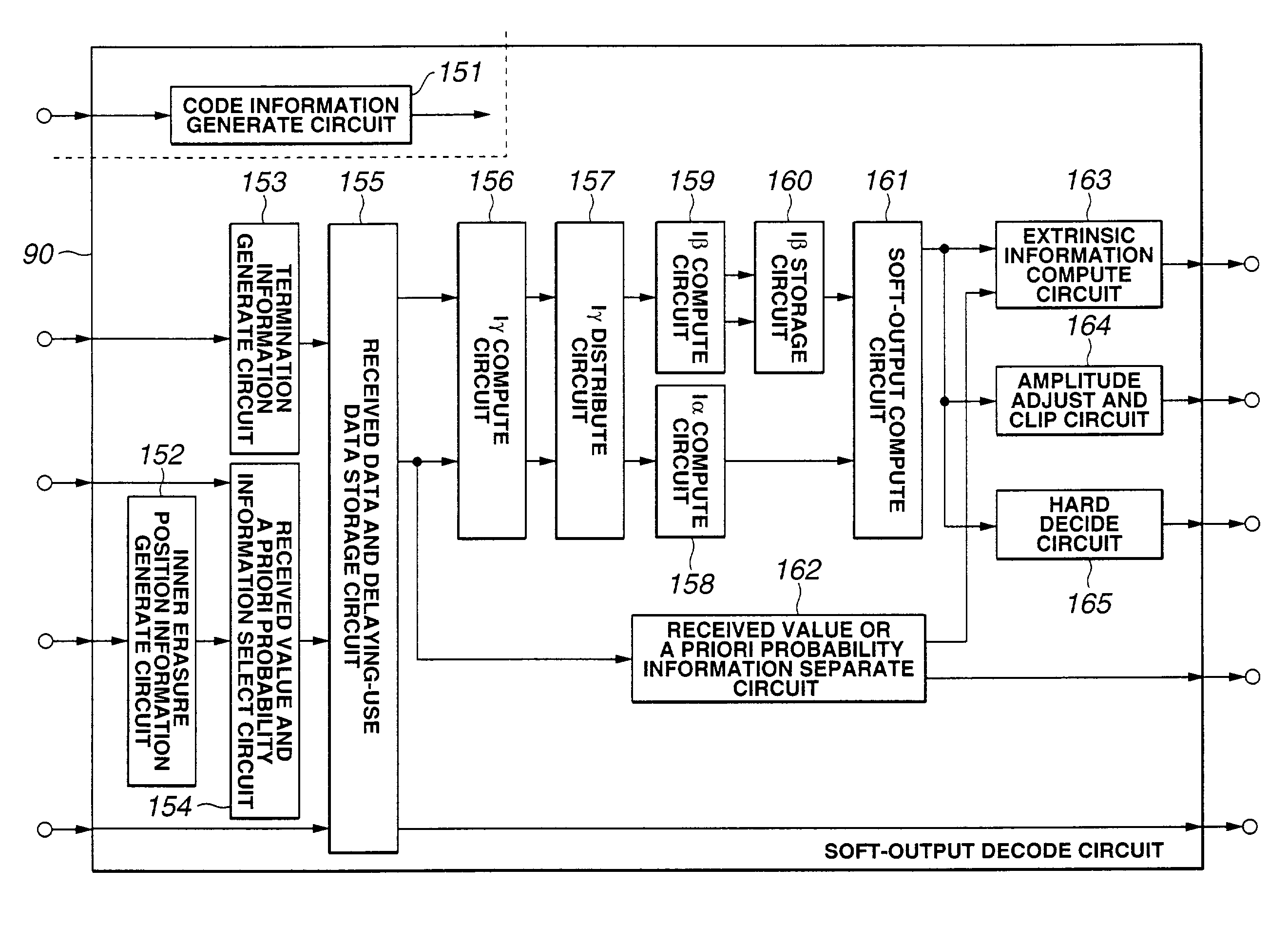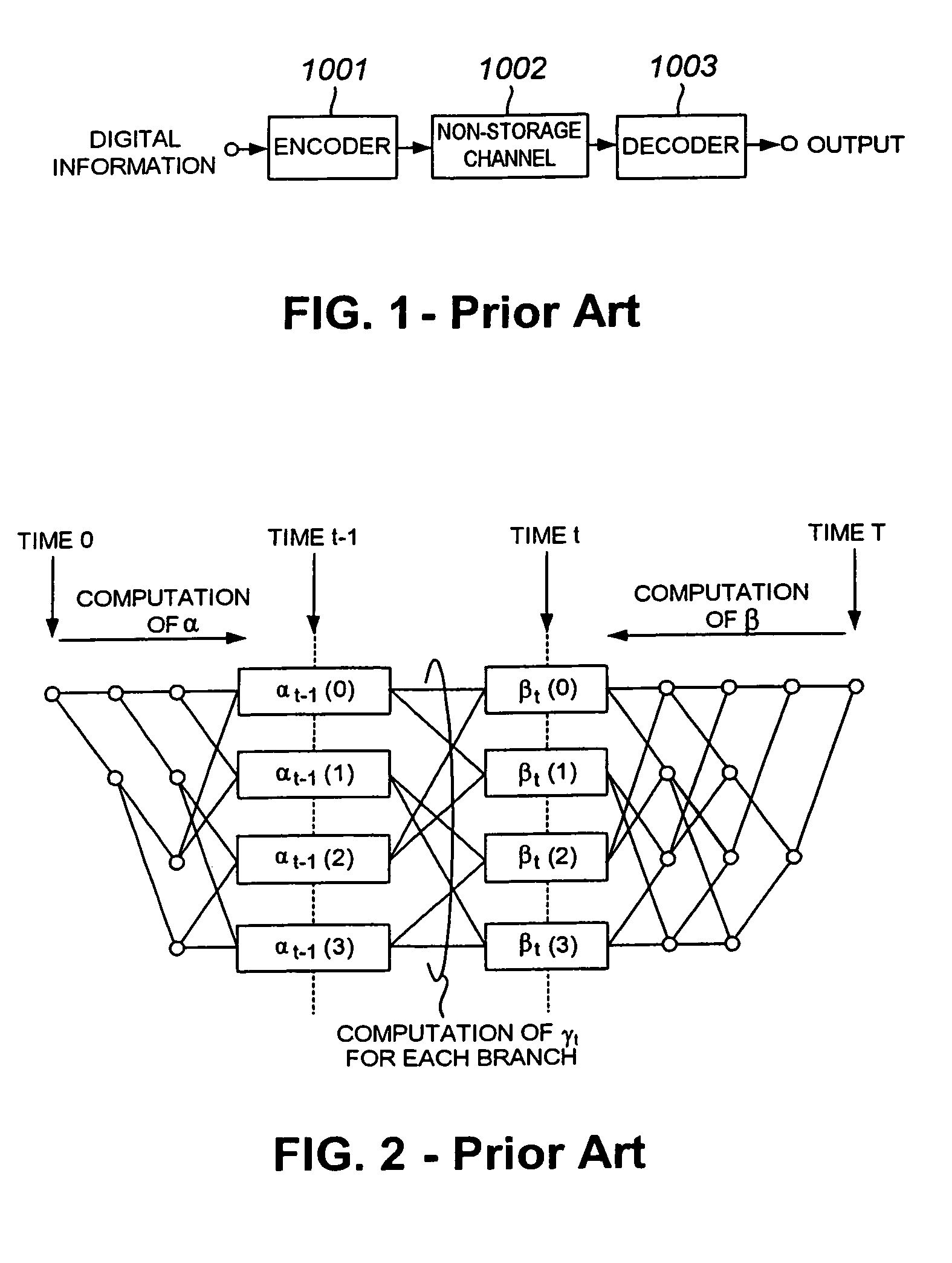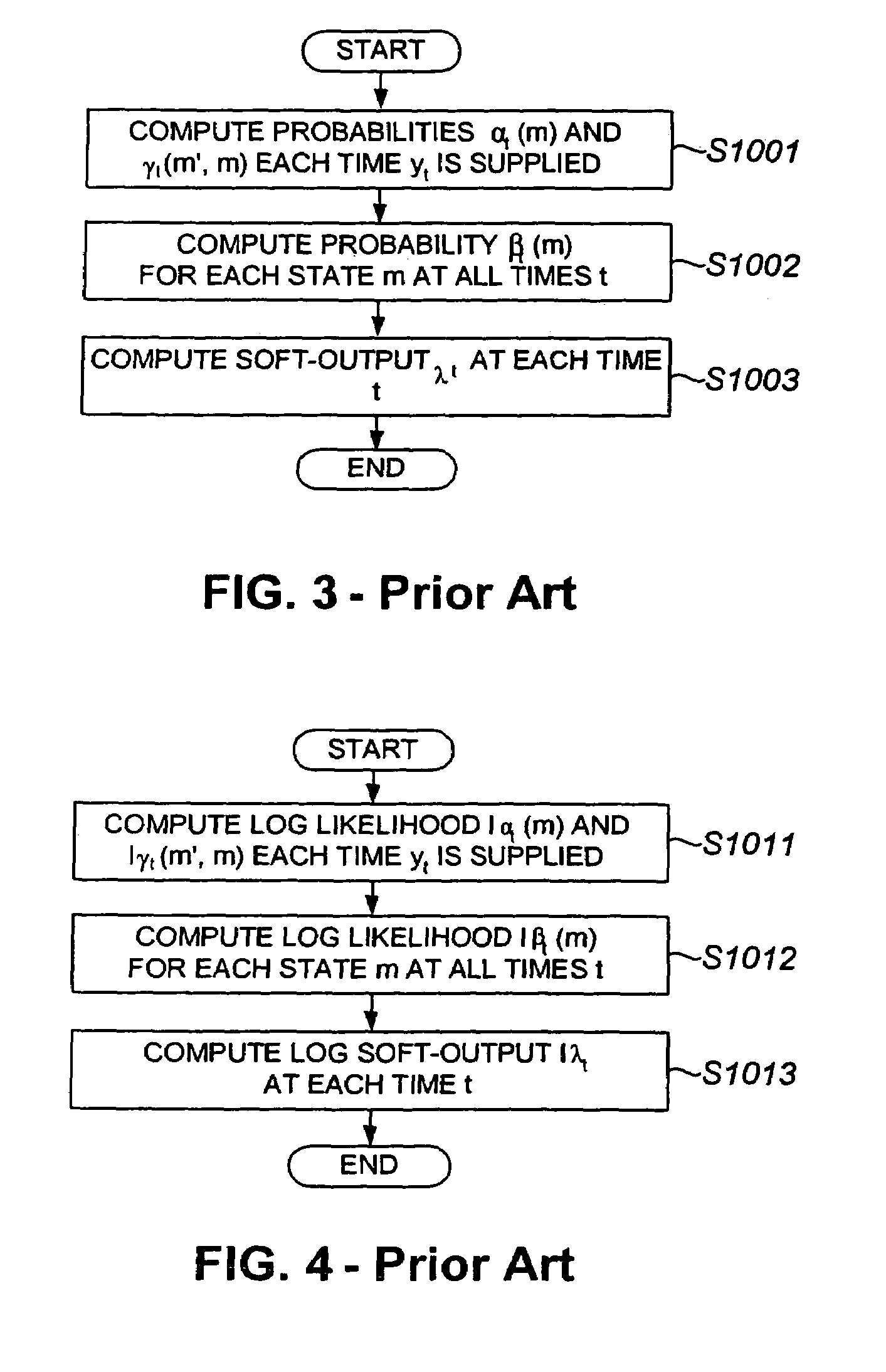Soft-output decoding
a decoding apparatus and output technology, applied in the field of soft-output decoding apparatus and method, can solve the problems of large processing burden of each element decoding device, large computation requirements of algorithms,
- Summary
- Abstract
- Description
- Claims
- Application Information
AI Technical Summary
Benefits of technology
Problems solved by technology
Method used
Image
Examples
Embodiment Construction
[0188]Referring to the drawings, preferred embodiments of the present invention will be explained in detail.
[0189]FIG. 5 is a block diagram of a communication model adopting the data transmission / reception system as one embodiment of the present invention. As shown, digital information is coded by an encoder 1 included in a transmitter (not shown), output from the encoder 1 is supplied to a receiver (not shown) via a noisy non-storage channel 2, and the coded digital information is decoded by a decoder 3 included in the receiver.
[0190]In this data transmission / reception system, the encoder 1 is designed to code the digital information by the parallel concatenated convolutional coding (will be referred to as “PCCC” hereunder) or serially concatenated convolutional coding (will be referred to as “SCCC” hereunder), in which trellis codes such a convolutional code are used as element codes, or turbo trellis-coded modulation (will be referred to as “TTCM” hereunder) or serial concatenate...
PUM
 Login to View More
Login to View More Abstract
Description
Claims
Application Information
 Login to View More
Login to View More - R&D
- Intellectual Property
- Life Sciences
- Materials
- Tech Scout
- Unparalleled Data Quality
- Higher Quality Content
- 60% Fewer Hallucinations
Browse by: Latest US Patents, China's latest patents, Technical Efficacy Thesaurus, Application Domain, Technology Topic, Popular Technical Reports.
© 2025 PatSnap. All rights reserved.Legal|Privacy policy|Modern Slavery Act Transparency Statement|Sitemap|About US| Contact US: help@patsnap.com



